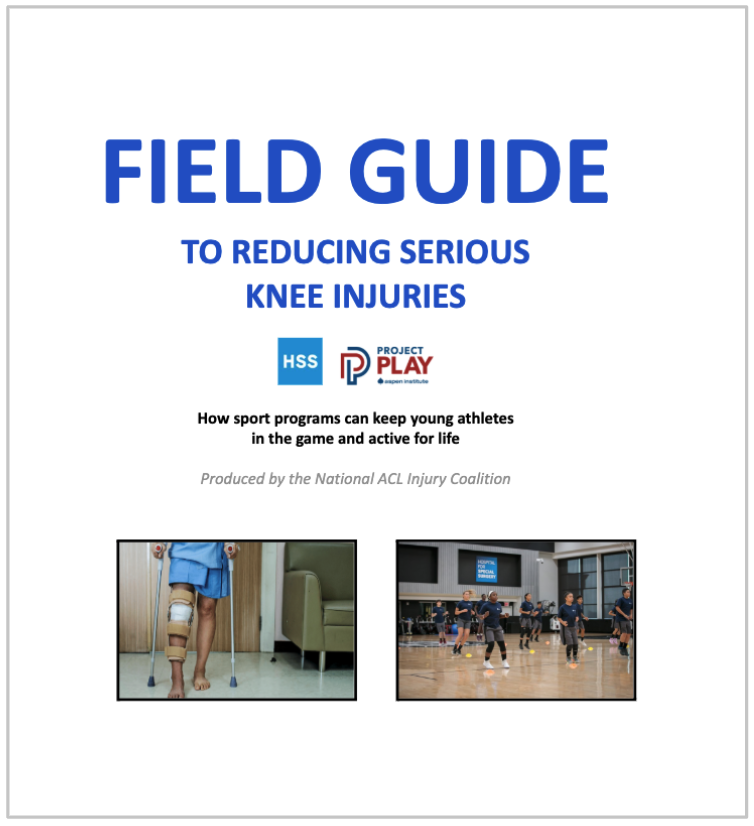SOLUTIONS
START WITH NEUROMUSCULAR TRAINING
Two decades of research now shows that simple exercises done regularly can dramatically reduce ACL injury risk. This neuromuscular training improves lower body strength and control, allowing athletes to change speed and direction safely. Training works by refining movement patterns, leading to less force on sensitive knee structures while also improving one’s ability to speed up, stop and cut on demand.
HOW IT WORKS
Reduce the force of ground impact by improving neuromuscular control. Neuromuscular training helps youth refine movement patterns and build muscle memory for sports and physical activity movements. The result is less pressure on sensitive knee structures.
WHAT IS REQUIRED
30-60 minutes per week, spread across sessions that typically last 10-15 minutes each. Athletes start in pre-season and continue throughout the season as a warm up, at home, like homework, or as part of a strength program. Whether on the field, at home, or in a gym, the key is consistency.
KEY ELEMENTS
Neuromuscular training is most effective for ACL injury risk when it specifically targets landing mechanics. Defining features include:
Lunges
Heel/calf raises
Hamstring exercises
Landing stabilization exercises
Verbal cues for correct technique
BENEFITS
Neuromuscular training results in:
Fewer serious knee injuries. 88% fewer ACL injuries for 14-18 year old female soccer athletes, and 53% fewer ACL injuries overall.
Fewer injuries, period. Participants report fewer knee sprains, ankle sprains, total injuries, and total days missed to injury.
Improved physical performance. Better acceleration/deceleration ability, motor control, lower leg strength.
Winning (!) Teams that implement NMT win more.
Healthcare Savings. Help families save thousands in medical costs for surgery and physical therapy.
Active communities. Prevent the arthritis that undermines active lifestyles into adulthood.
GET STARTED
PROGRAM DIRECTORS
Our new Field Guide walks schools, clubs and programs through the basics of setting up neuromuscular training in your community. A resource for programs that work directly with athletes.
Download the Field Guide
Read: NY Charter School Made Neuromuscular Training a Priority
NATIONAL LEADERS
The time is now. Our national call to action outlines strategic priorities for regional and national leaders.
Download the Call to Action
Read: How Netball New Zealand figured out ACL injury in women & girls
COACHES
With every game and practice session, you and your staff have an opportunity to improve players’ lower body strength and control. Athletes benefit from just 10-15 minutes, 2-3 times per week. Get started with Neuromuscular training today.
Browse our resources to find the program that’s right for you
Take a free ACL Injury Prevention Course
THE ACL PLEDGE
Whether you’re an administrator, athletic director, coach, parent, athlete or fan, everyone has a role to play. Let’s rally around this crisis and solution. Take the ACL Pledge to lend your support for our mission to keep athletes on the field.
Sign our pledge form





